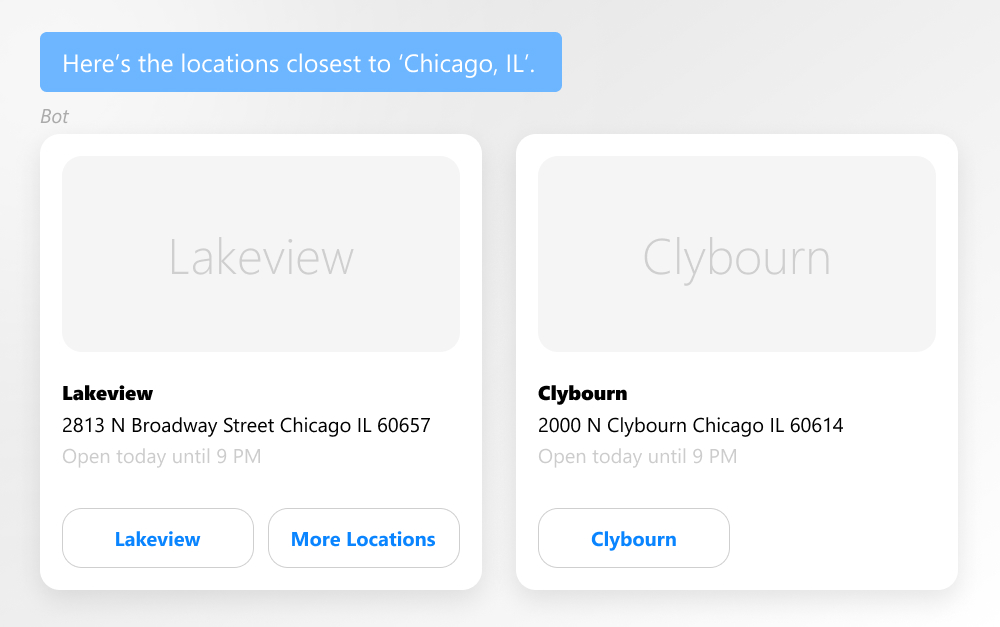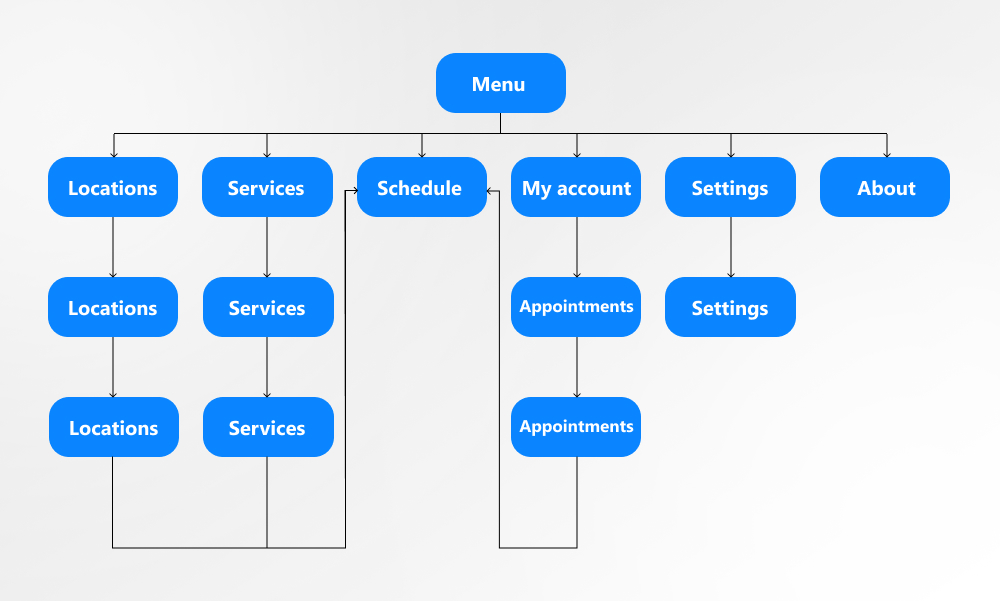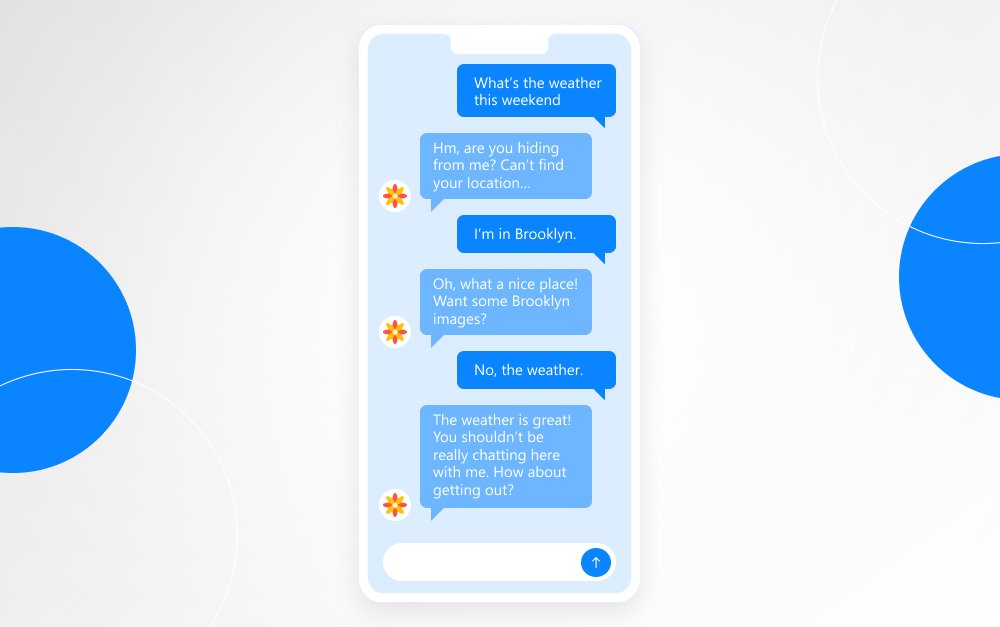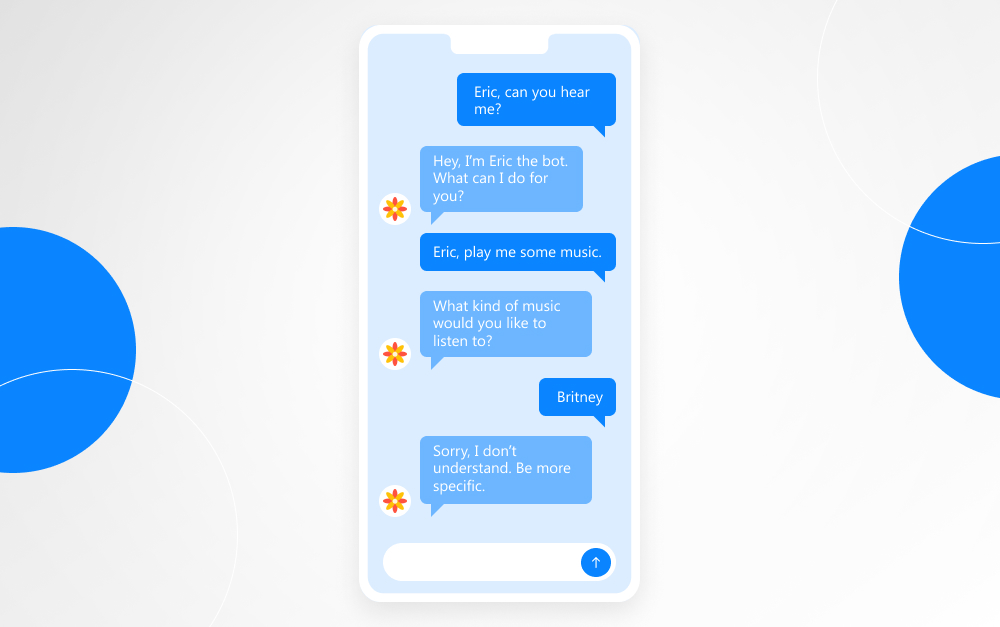If you want to take customer experience to the next level and further improve their relationship with your brand, then launching your own chatbot or voice assistant is a great move. These tools are awesome for quickly accessing basic information about a product or service, and one of the best things about them is that you can get what you need at the touch of a button. However, to make sure that the user-machine communication is seamless and positive, we advise checking that you’ve considered every conversational UI detail. With this guide, we’re going to help you do just that!
written by:
Elizabeth Starikova
UX/UI Designer
Thinking about unveiling your very own chatbot or perhaps diving into the realm of voice assistants? That's fantastic! Just remember, it's crucial to meticulously ponder over every aspect of conversational UI to guarantee flawless interactions between users and machines. Look no further than our Ultimate Guide for Conversational UI Development to steer you in the right direction!
Contents
Conversational User Interface. Basic Info and Definition
“Conversational UI refers to a conversational user interface. These are the things you can physically see or hear to make decisions and engage with a conversational chatbot.” (BotSociety)
Thus, when we talk about conversational UI, we mean any software that can literally talk to us by visual or audio means (aka graphic interface or voice). Although almost any website or app nowadays tries to communicate with its users, conversational UI products are different. Their conversation is explicit and tries to emulate human speech.
Here are some examples of conversational interfaces:
- World Health Organization’s Health Alert
- Erica. Bank of America’s chatbot
- Google Assistant
- Siri by Apple
It's important to emphasize that conversational UI isn't just another software or standalone technology; it's best understood as a paradigm facilitating interactions between humans and technology in terms that humans can readily comprehend. Fundamentally, conversational UI aims to enhance accessibility to information.
Furthermore, it's noteworthy that the trend of virtual reality (VR) and augmented reality (AR) is rapidly gaining momentum, and consequently, conversational UI is evolving in tandem. In the foreseeable future, we may witness Siri or Alexa integrated into VR-capable devices, enabling us to engage with them in a manner akin to conversing with our human companions.
For now, though, voice assistants and chatbots are the most popular types of conversational UIs in 2024. Time to see how to develop them!
How to develop conversational interfaces
N.B. All the images used in this article are an approximate visualization of conversational UI and require updating/customization to be utilized in real-life projects.
We'll start our Ultimate Conversational UI Guide by sharing with you How not to develop conversational interfaces. Have a look at the screens below for clarity.
This is what a good chatbot shouldn't be.
Or else. Watch the voice assistant crushes in this video.
See? Natural language processing is way more difficult than it seems to us, humans.
Let's find out now what a truly great conversational interface looks like.
As for the voice assistants, check out this cool video.
Aren't they stunning? How to achieve that? Time for real actions finally!
Designing a great conversational UI
Hm... Where to start?
It’s a good practice to start with a voice product if your project includes both a chatbot and a voice assistant. Cathy Pearl, Head of Conversation Design Outreach at Google, explicitly recommends that in her series of video tutorials on the topic. This is mostly because a voice product requires more effort and time to develop. So it's only logical to deal with the hard task beforehand to finish with a piece of cake.
Here are our exclusive perspectives on crafting the user interfaces for both chatbots and voice interactions (VUI), accompanied by additional points of interest in the footnotes for your benefit.
Step 1. Structure of a conversational interface
Start with writing a basic UI/VUI structure. This is a route that your software product will use in guiding customers from a hello message to buying/ordering a service/etc.
Have a look at the scheme below for better comprehension.
The basic structure is a skeleton of a dialogue. Your software doesn't get confused at any point if it uses a basic structure and some trigger words as a guide. Even artificial intelligence/machine learning-enabled voice assistants and chatbots great at natural language processing need a clear plan to use and yet still occasionally get stuck in situations that need out-of-the-box thinking.
*Solid foundation is an absolute must for VUIs. As they often struggle processing input info pronounced with different accents, creating a clear structure with a bunch of keywords is a great idea.
Step 2. User archetype and scenarios/user stories for conversational user interfaces
Proceed with building a user archetype and writing basic user-machine interaction scenarios or user stories.
Even if you’re not developing some industry-specific product (medicine, finance, etc. where a deep analysis and tons of research is a must), user modeling is critical. Try building a user archetype that will help a lot in creating your use cases and scenarios.
User archetype allows better predicting user behavior, identifying user needs, and building more efficient dialogues. You can even determine the personality types of your users with it if you wish. With everyone so crazy about personalization today (which is a good thing, obviously), take some time doing Step 2 properly.
Consider also doing some mini-research to avoid stereotyping or biased/opinionated UI. Researching is easier than you might think and does not require tons of time and money.
Additionally, create a few test scenarios. What if your user asks a stupid or irrelevant question? Such things happen, as users sometimes wish to see what a chatbot is capable of. Test scenarios will help you prevent a situation where a bot has nothing to say and allow chatbot/VA to sound natural.
*Writing a user story for a voice assistant can be a bit more challenging, as speech is often not that specific as text, so assistants may have difficulties decoding the user’s intent. Read this great blog post by Frederik Goosens, UI Designer, to learn more on how to create user stories and prototypes for VUI.
**In case you need more details on how to write user stories, check out our blog post on the topic.
Step 3. Bot Persona
Before you set off writing dialogues, give a good think to a thing your users will be talking to. Conversational user interfaces can be visualized as a human-like object (like Alexa) or a thing (like Google Assistant). Regardless of their 'appearance', they should be friendly, helpful, forgiving, and tolerant.
*Behind every speaking technology stands a voice actor. Thus, for a great VUI invest in a great voice representing your brand.
Step 4. Copywriting
This is actually where the real fun begins, although writing a good copy is a hard and demanding task. To a certain extent, copywriting will resemble a filmmaking process, and writing a good conversation requires lots and lots of shots and creativity. Besides, a dialogue shouldn't be only fun. Above all it must be functional and based on the three principles of a good conversation - Cooperative principle, Taking turns, and Context (according to Peter Hodgson, Staff Interaction Designer at Google).
1. Cooperative principle
To make a conversation work the conversation participants should cooperate. This means we expect our partner to be truthful, informative, relevant, and clear.
2. Taking turns
Both participants of the conversation should keep the conversation alive, it’s not a solo passage. In case one participant is talking too much or too little, the conversation goes wrong.
3. Context
For a good conversation to happen, there should be a context. You won’t start chatting with a stranger in the street, just because you are having ‘fits of sociality’.
Furthermore, we'd like to add three extra points that'll help you create really functional and smooth dialogues.
a) Set the right expectations from the start. A bot/assistant should introduce itself and explicitly say that it's not a human. Like this.
If a user understands that they are talking to a machine, they'll try to be more specific. Humans are super adaptive creatures, so it's in our nature to find a way to understand a machine.
b) Replicate human everyday speech as much as possible. This will reduce users' stress from talking to a machine and increase conversions.
By saying 'replicate human's speech' we mean using short simple sentences, contractions (can't vs cannot, won't vs will not), introducing a bit of slang and humor, where possible. You'll be amazed to see how much a friendly bot trying to speak the same language as a human user can achieve in comparison to a bot acting like a computer.
Have a look at the two dialogues below to see what we mean.
As you see, this bot is ‘trying hard’ to make a conversation possible, although it is not 100% successful at it. It’s very likely that a human using the bot is going to give it a second chance.
On the other hand, this one is ‘not trying at all’. No second chances, buddy.
c) Test at your best. After writing your first dialogue, find a ‘victim’ and test it - read your dialogues aloud. Table read, they call it in the film-making industry. Try table read with your friend. Besides having a lot of fun, you’ll do a great job identifying cringey parts of your text. Actually, you’ll be amazed to find how ‘artificial’ your dialogue may sound. Writing a really good copy will require dozens of shots, so be patient and persistent.
*In cases where chatbots can show the menu or a list of options to the user, voice assistants can only speak out loud. This will make dialogue impossible sometimes and will conflict with Cooperative Principle and Taking Turns all at the same time. Make sure your VA gives only relevant information to the user, whereas detailed info is presented on the screen.
Conclusion
As pandemic is still standing in our way to normal human-to-human communication, people are getting more used to talking with chatbots and voice assistants. Stats show a positive shift in humans’ perception of bots, whereas businesses are using them as actively as ever. It’s a great time to build your own chatbot or a VA! We hope you'll find our Ultimate Guide on Conversational Interfaces helpful in achieving that.
Before you go, though, we’d like to give extra focus to some highlights from this article for seamless bot development.
- Invest into great conversation structure. Even if your bot/assistant gets lost, the structure and trigger words will help it find the way out.
- Build a user archetype and write lots and lots of relevant user stories.
- Elaborate on your bot persona and give it a great voice (for VUI). In case it messes up the whole dialogue, it'll sound perfect at least.
- Writing a good copy takes time. Be patient and test it a lot on real people. Remember to write all the dialogues with 3 principles in mind (Cooperative Principle, Taking Turns, Context).
Seems like you're done reading and ready to start a great project!
In case you need some additional info on the topic, you can always reach out to us via messengers, email or using this contact form on our website.

Contacts
Feel free to get in touch with us! Use this contact form for ASAP response.
Call us at +44 151 528 8015
E-mail us to request@qulix.com



Feel free to get in touch with us! Use this contact form for ASAP response.
Call us at +44 151 528 8015
E-mail us to request@qulix.com











